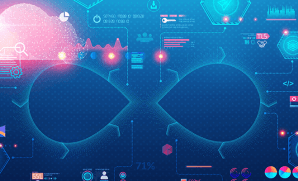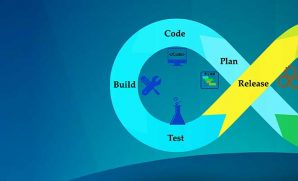With the constantly changing landscape of the business world, companies need to be agile and adaptable to stay ahead of the curve. That’s where modernization comes into play. Application modernization transforms an enterprise’s legacy applications into modern architectures that can use cloud-native services such as containers, microservices, serverless, and a range of DevOps methodologies.
While DevOps automates and streamlines the software development process, Application modernization focuses on enabling legacy applications to use modern technologies and architectures.
What is the need for Modernizing Legacy System?
Running legacy applications/systems stifle’s organizational growth, especially when they cannot align to meet market demands. Considering the pace at which business requirements are changing; it is imperative for every organization to reduce technical debt and modernize their IT to meet ever-changing business needs. Some of the challenges that organizations face while using legacy setup are:
- Complex to update – Such legacy applications have monolithic architecture. Changing this sort of application is quite difficult as it requires updating the entire stack by accessing the code base and building and deploying an updated version of the service-side interface. This makes updates restrictive and time-consuming.
- Most expensive to scale – The approach demands significant investment and adds costs and effort.
- Security Risks – Many legacy apps contain known or unknown security vulnerabilities.
- Organizational Agility & Efficiency – Businesses relying on legacy systems sometimes lack organizational agility to meet market demand.
- Sketching the future becomes tough.
How Application Modernization benefits
- Improved performance: App Modernization enhances the performance of apps, making them faster, more efficient, and more reliable, resulting in organization’s agility to meet business needs.
- Enhanced Security: Modernizing an application can help address many vulnerabilities and ensure that the application is more secure. Hence, it is crucial for companies to adopt modern applications to ensure the safety of their business as well as data.
- Reduced maintenance costs: Modernizing an application helps reduce maintenance costs and improve the overall efficiency of the application.
- Build Cloud Native Apps: App Modernization enables organizations to rearchitect their legacy applications to cloud-native applications. It empowers them to leverage public cloud benefits such as faster go-to market, agility, scalability, security, reliability, cost reduction, etc. Allowing them to adapt to changing business needs and handle increasing user demand.
- In Sync with New Technology: New-gen digital technologies like Artificial Intelligence, Machine Learning, Big Data, and the public cloud can be leveraged through App Modernization.
- Enriches Customer Experience: Modernizing app also helps enhance the user experience by providing a more intuitive and user-friendly interface and making the application more accessible on mobile devices and across different platforms.
Role of DevOps in App Modernization
DevOps plays a significant role in modernizing applications by emphasizing on collaboration, automation, and quick issue remediation. Processes like CI/CD, Infrastructure Automation, security, and testing, which are part of the DevOps framework, add lot of value in overall application modernization. The combination of DevOps and cloud-native services such as containers, microservices, serverless etc enhance application modernization efforts, which is crucial for businesses to remain competitive in a constantly evolving technological landscape.
Key DevOps Technologies/Processes in App Modernization
Some of the eminent technologies used for App Modernization are-
- Cloud Services – It plays a significant role in providing scalability and flexibility across application landscape and gives comfort to develop and deploy applications easily. Accessibility, security, innovation, cost savings are some of major benefits using cloud services for application modernization
- Infrastructure Automation (IaC) – Infrastructure automation allows businesses to manage infrastructure in agile and efficient way by reducing time & efforts required for provisioning, management & maintenance. It provides consistency, speed & reusability, scalability, and allows to even version control infrastructure changes
- Containers – It enables an application to be packaged in consistent, lightweight ways so that they can run consistently across desktop, cloud, or on-premises environments
- Kubernetes -An open-source system for automating deployment, scaling, and management of containerized applications.
- GitOps – It provides a powerful & flexible way to manage infrastructure & application deployments using Git (Version control) as only source of truth. It brings all major DevOps processes like IaC, DevSecOps, DevTestOps, monitoring etc. under one umbrella to streamline and deliver infrastructure and applications faster and with high quality.
- Observability – It allows an organization to understand behavior of applications and provides insight into performance, issues & remediation of them. Based on fundamentals of metrices, traces & logs, observability brings real time analysis of application behavior and helps in resolving issues quickly and optimizing applications which is needed for application modernization
In summary, DevOps approach helps organizations to accelerate the modernization of legacy applications, reduce risk, and improve the quality and reliability of their software. DevOps also encourages a culture of continuous improvement and feedback, enabling teams to identify and address issues early in the development process.
Overall, the synergy between DevOps and application modernization is clear. By leveraging the benefits of both approaches, organizations can achieve faster time-to-market, greater agility, improved collaboration, and better-quality software. As such, DevOps is a key enabler of successful application modernization efforts in today’s fast-paced, rapidly changing business environment.










